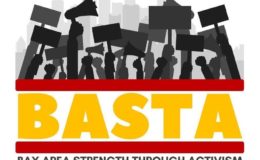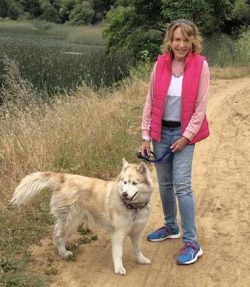Thanks for this write up Bruce! I know removing free public parking will be hugely unpopular in Castro Valley, but it would make that road so much safer for cyclists. It would ease the stress of drivers moving down the road with bicyclists. I know my kids feel safer riding in a bike lane and won’t ride on Somerset, literally because they fear for their lives. Thank you for this perspective Bruce
A Perspective on Bike Lanes for Somerset Avenue
- By : Guest Voice
- Category : Public Safety
Guest Post by Bruce Dughi, Castro Valley resident.
Alameda County plans to completely remake Somerset Ave. between Stanton Ave. and Redwood Road soon, including sidewalks, curbs, and painted bicycle route signs. Following Table 3-8 of the Alameda County Bicycle and Pedestrian Master Plan for Unincorporated Areas [pdf] from 2012, Somerset Avenue is not getting a dedicated bike lane, but rather a designation of a bicycle route. These bicycle route signs are meant to encourage bicycles to ride in the middle of the street to avoid injury from parked car door swings, and to encourage lane-sharing by cars and bicycles. However, the plan will also narrow the moving lanes, which means that cars trying to pass bicycles will find it much more difficult than today. Add this to a new law requiring cars to give three feet of space while passing bicycles (AB 1371), and passing cars will spill over the median into oncoming traffic. With very high traffic volume of 9,734 cars/day, Somerset is far too busy a road to share with bicycles. Instead, bicycles need their own lanes to reduce conflict between car and bike.
The public right-of-way along Somerset varies from 50 to 55 feet. Presently, the extra 5 feet is used for the moving lane but Public Works plans to narrow the moving lane to create a more consistent width and use the extra 5 feet for the sidewalks. Currently, drivers park on the pedestrian portion of the road because there are no curbs; when Public Works adds curbs, those parked cars will come out 2-3 feet into the moving lane.. The overall result will be a much narrower moving lane than what we enjoy today, putting bike and car into more direct conflict in the future.

The only way to reduce the conflict is to widen the moving lanes. Given limited space, the only way to widen moving lanes is to remove one static lane of publicly subsidized free parking. This allows enough space for dedicated bike lanes. Cars would enjoy obstacle-free driving and bicycles would enjoy less stress–the road would be safer. With this new found safety, perhaps more students and families would take up cycling.
Removing free publicly subsidized parking is not new to Castro Valley. Public Works has already removed free residential parking near the high school along Santa Maria, Mabel and Redwood roads. There is no parking on Santa Maria opposite the Post Office. There is no parking on Somerset at Al’s Market. There is no parking on Heyer between Center and Cull Canyon. The main goal of public roads are to move people and goods rather than store personal vehicles.
Make your voice heard by phoning or emailing our Alameda County Supervisor, Nate Miley at bob.swanson@acgov.org (510-670-5717) and Public Works Director, Daniel Woldesenbet at danielw@acpwa.org (510-670-5480).
A version of this post appeared in the Castro Valley Forum on August 6, 2014.
Bruce Dughi recently moved to Castro Valley for its schools, compact layout and BART station. He lives in lower Castro Valley with his wife, high school son and two young daughters. Although he drives, he strives to ride a bicycle for shorter trips such as school, BART and local shopping. He advocates for bike lanes to promote cycling within the community by making cycling safer.


